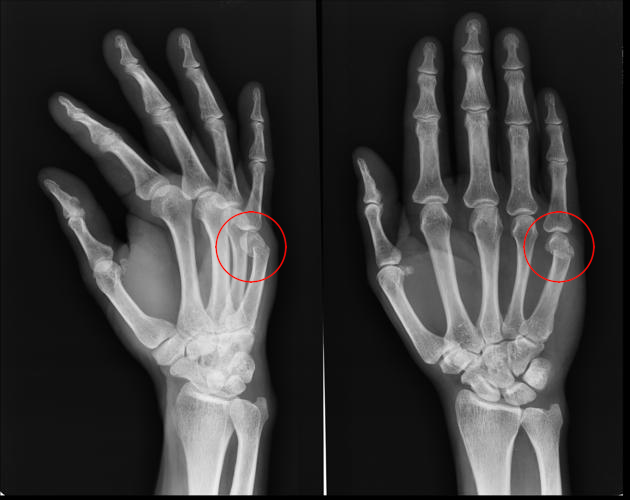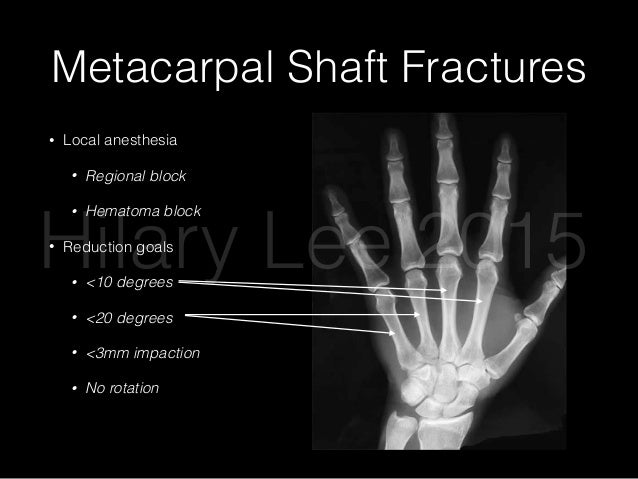
Unsintered hydroxyapatite and poly-L-lactate composites (u-HA/PLLA) are resorbable osteosynthetic bone fixation implants with osteoconductive properties that promote replacement with new bone. Surgical removal of the implant is frequently required to avoid complications moreover, titanium plates and screws are often difficult to remove after extended periods. However, metallic implants may interfere with extensor tendon gliding and induce metallosis and allergic reactions. However, open reduction and internal fixation is a common surgical treatment for unstable metacarpal fractures, and the use of metallic implants is considered the gold standard for operative treatment. Metacarpal fractures are common, and most of them can be treated successfully without surgery. The potential for bioabsorbable plates to be used in various clinical procedures is promising.


The bioabsorbable plates are more cost-effective than metallic implants. This study demonstrates that the process of bioabsorption in metacarpal fractures might be completed in about 8 years, and the absorption speeds were different inside and outside of the bone. We also observed that it took more than 8 years for the plates to be absorbed completely. The mean Q-DASH scores of 11.36 points (0–34.09) was good in all but two patients. All fractures united without displacement after an average of 3.5 months, and there were no implant specific complications associated with the use of absorbable plates. The mean age of the patients at the time of surgery was 29.5 years (16–54), and the median follow-up period was 81.8 months (68–101).

The resorption status of implants was assessed on plain computed tomography (CT) scans at final follow-up appointments. The clinical outcomes were evaluated using Q-DASH scores and the grip strength (GS): opposite side ratio. All patients were followed for more than 5 years post-surgery. MethodsĪ retrospective analysis of six patients with eight metacarpal fractures treated with bioabsorbable plates was done. This study assess the long-term (> 5 years) outcomes of patients with metacarpal fractures who were surgically treated using bioabsorbable plates and screws (Super-Fixsorb MX40 mesh Teijin Medical Technology, Osaka, Japan). The alignment of the broken metacarpal directly and hold the pieces in place with tiny metal plate and screws.Implants made from bioabsorbable unsintered hydroxyapatite and poly-L-lactate composites (u-HA/PLLA) are widely used in the oral, maxillofacial, and orthopedic fields. If the fracture is severe, it may be necessary to make a small incision over the back of the hand to restore
3rd metacarpal fracture splint skin#
If the metacarpal can be set straight, metal wires are placed through the skin and into the bone to keep it straight while it is healing. A regional block numbing of the arm is performed, and Operative Treatment: Surgical repair of metacarpal fractures is required when the fracture pieces are unstable (won’t stay in place), or not healing properly with cast treatment. Occasionally the fracture needs to be numbed up and “set” straight. Nonoperative Treatment: Splinting and casting are the mainstays of nonoperative treatment of metacarpal fractures that are stable and not badlyĭisplaced (out of alignment). Undesirable outcomes such as nonunion (won’t heal) or malunion (heals crooked). Even without these warning signs, it is best to seek urgent treatment as the results of delayed treatment of metacarpal fractures can lead to Significant deformity of the hand or any open wounds around the hand (possible open or compound fracture). Suspected hand fractures warrant emergent treatment if you are experiencing hand numbness and tingling, severe or “tight” swelling, X-rays usually offer definitive diagnosis and help with treatment planning.

Yes! Often fractures are obvious on physical examination, but severe sprains and contusions can also look and feel very much like a metacarpal fracture. Is There a Test for Metacarpal Fractures?


 0 kommentar(er)
0 kommentar(er)
